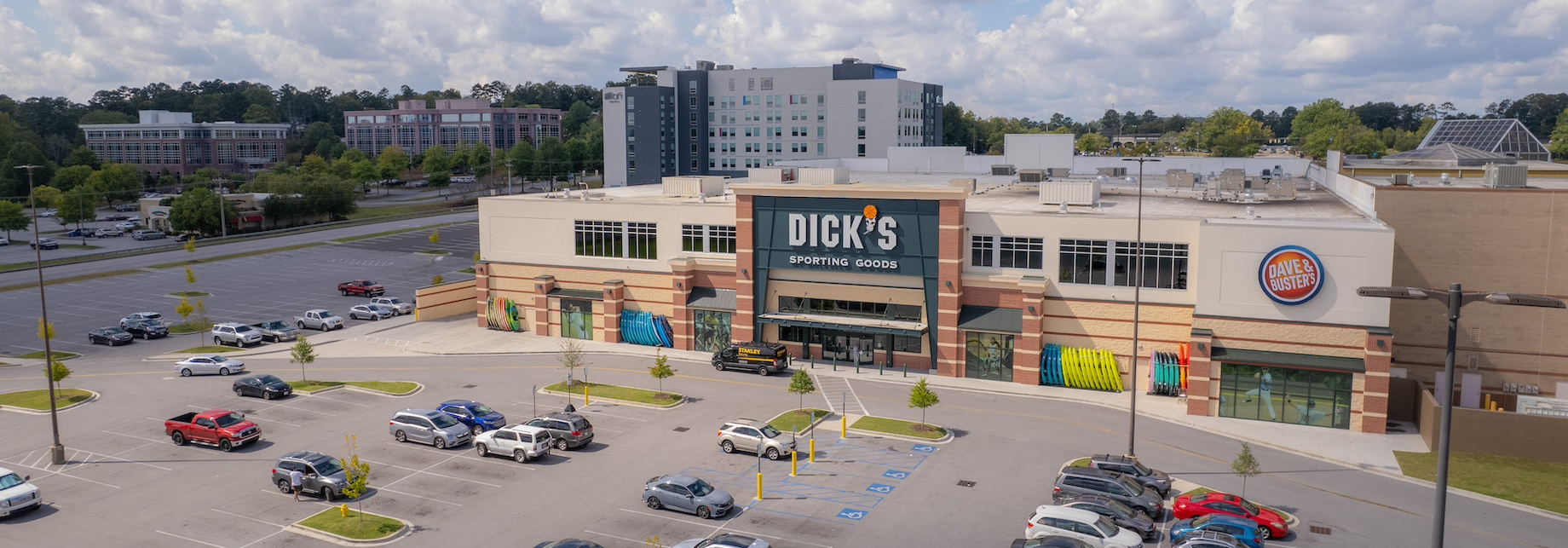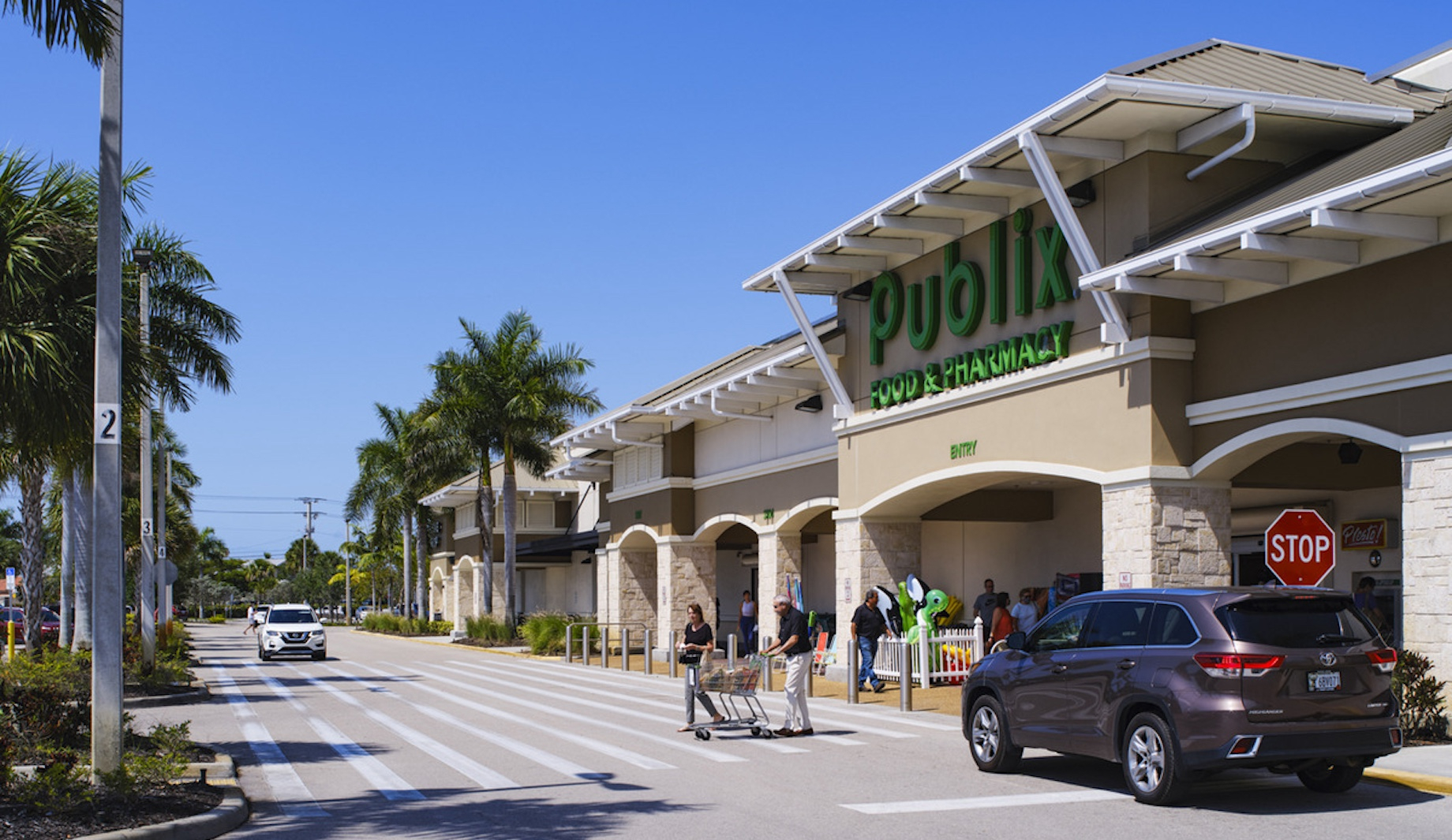Rising retail demand after a nearly two-decade drought of shopping center development has fueled robust reinvestment activity in existing shopping centers. Though higher interest rates and construction costs pose challenges to redevelopment, expansion-minded retailers remain willing to pay the higher rents needed to support the activity.
“So far, retailers have seen the incremental additional rent as manageable versus the growth opportunities that they have,” observed DLC CEO Adam Ifshin, whose company owns and operates open-air centers nationwide. “The smart retailers haven’t stopped expanding. They know that if they wait, it’s only going to get more expensive because there has been no new development and there’s not going to be anytime soon.”
“The smart retailers haven’t stopped expanding. They know that if they wait, it’s only going to get more expensive.”
If the average cost of construction was around $80 per square foot before the pandemic, inflation and lingering supply chain issues for certain materials have propelled the price to about $120 per square foot, Ifshin suggested. To make deals work, retailers often are securing lower rents by putting more of their own capital into a space redo and building to a standard slightly below the brand’s specifications, he explained.
The rapid backfilling of vacant Bed Bath & Beyond stores following its bankruptcy last year illustrates how keen retailers are to find space. Until Big Lots announced last week that it would close around 40 stores this year as it considers bankruptcy, Joann’s Chapter 11 filing in March was the only signal that boxes of comparable size to Bed Bath & Beyond might become available in the months ahead.
Ifshin said that a retailer, expecting Joann stores to become available, proactively approached DLC to express interest in a Joann space in a Northwest Arkansas power center. Joann managed to keep all its stores open as it emerged from bankruptcy, but DLC’s cold-caller still executed a lease that will begin if and when that Joann location shutters in the next two years. “The retailer had already gone to its real estate committee even before Joann filed because it had lost out on a Bed Bath & Beyond space in the market,” Ifshin said. “It has effectively bought an option at a radically higher rent than what Joann is paying in the hopes that the space becomes available.”
Moving Beyond Anchors
DLC has retrofitted some 108 big boxes over the past six years. More recent redevelopment efforts include the addition of a Floor & Decor in part of a former Giant Eagle grocery store at Powell Center in suburban Columbus, Ohio, which DLC bought last fall.
Similarly, CBL has replaced roughly three dozen dark anchors like Macy’s and Sears over the past seven years with a range of users, including Dick’s Sporting Goods, HomeGoods, Burlington, casinos and restaurants. At CBL’s 1.2 million-square-foot Hamilton Place mall in Chattanooga, Tennessee, a $2.6 million, 35,000-square-foot Crunch fitness center completes a Sears redevelopment that also features a Dick’s, a Dave & Buster’s, and an Aloft Hotel. CBL CEO Stephen Lebovitz predicts that the new tenants will generate three to four times the $8 million to $9 million in annual sales that Sears was doing.

CBL has redeveloped the former Sears at Chattanooga, Tennessee’s Hamilton Place mall into a Dick’s Sporting Goods, a Dave & Buster’s, a Crunch fitness center, an Aloft Hotel and office space.
As CBL’s opportunities to fill vacant anchor spaces dwindle, however, the REIT is focusing on pad sites and undeveloped outparcels, Lebovitz added. On a vacant parcel at its mixed-use Pearland Town Center in Houston, for example, the company recently developed a $14.2 million, 48,000-square-foot medical training center for HCA Healthcare. In some cases, CBL is seeking joint ventures or selling or leasing land versus developing projects independently. “The pace of redevelopment in our portfolio continues to be steady even without as many vacant anchors as we had in 2017 and 2018,” he said. “While interest rates and inflation have created some challenges, the willingness to pay higher rents has helped.”
Robust Rent Spreads
It’s not unusual for those higher rents to be more than 20% greater than existing rents. Brixmor reported that the average rent spread between old and new leases in its 64 million-square-foot portfolio of open-air assets was 39% in the first quarter. “One of the advantages that we have is that our centers have a low rent basis,” said COO Brian Finnegan. “They’re generally older and well-located, so when we’re putting capital to work, we’re doing it accretively and are able to bring rents to market” rate.
The REIT plans to reinvest $150 million to $200 million in its properties annually for the foreseeable future. Typically, that work has included developing outparcels and dividing or demolishing vacant boxes to make way for new tenants, he said.
In addition to the prospect of taking back Red Lobster restaurants and other empty spaces, acquisitions represent one of Brixmor’s biggest redevelopment opportunities. The REIT paid $48.5 million for Florida’s Center of Bonita Springs in 2021 and now is remerchandising a former Old Time Pottery discount store with a 42,000-square-foot Kohl’s and a 29,000-square-foot Burlington. Rental rates for that space are increasing from about $2 per square foot to around $15 per square foot, Finnegan said.

At Center of Bonita Springs in Florida, Brixmor divided a former discount store space into two smaller spaces: 42,000 square feet for Kohl’s and 29,000 square feet for Burlington.
A big part of Brixmor’s acquisition strategy, Finnegan said, is: “What else can we do at this property? How can we put the platform to work?”
Deep Demand
Phillips Edison & Co., which owns and operates 32.4 million square feet of grocery-anchored centers in the U.S., also sees acquisitions as an important source of redevelopment opportunities, said president Bob Myers. Eight of the 14 properties it purchased last year provided attractive redevelopment possibilities, but acquisition bumper crops are getting more difficult to harvest, he suggested. “Grocery-anchored product has been in such high demand over the last two to five years, especially given the urban-to-suburban migration that’s been happening. It’s a competitive market to find acquisitions with vacancy and upside. We’re continuing to look for those opportunities.”
Phillips Edison aims to spend $40 million to $50 million a year on redevelopment within its portfolio, typically on smaller spaces of 5,000 to 10,000 square feet, including by building on outparcels and buying adjacent land. The REIT has a redevelopment pipeline of some $125 million over the next few years, Myers said.
“The retailers that I met with at ICSC [LAS VEGAS] in May are all looking to secure sites in 2025 to 2027 because they need to grow,” he said. “We continue to see a lot of demand from fast-casual restaurants, health and beauty, medtail and services. With the lack of new supply, demand should remain high.”
By Joe Gose
Contributor, Commerce + Communities Today